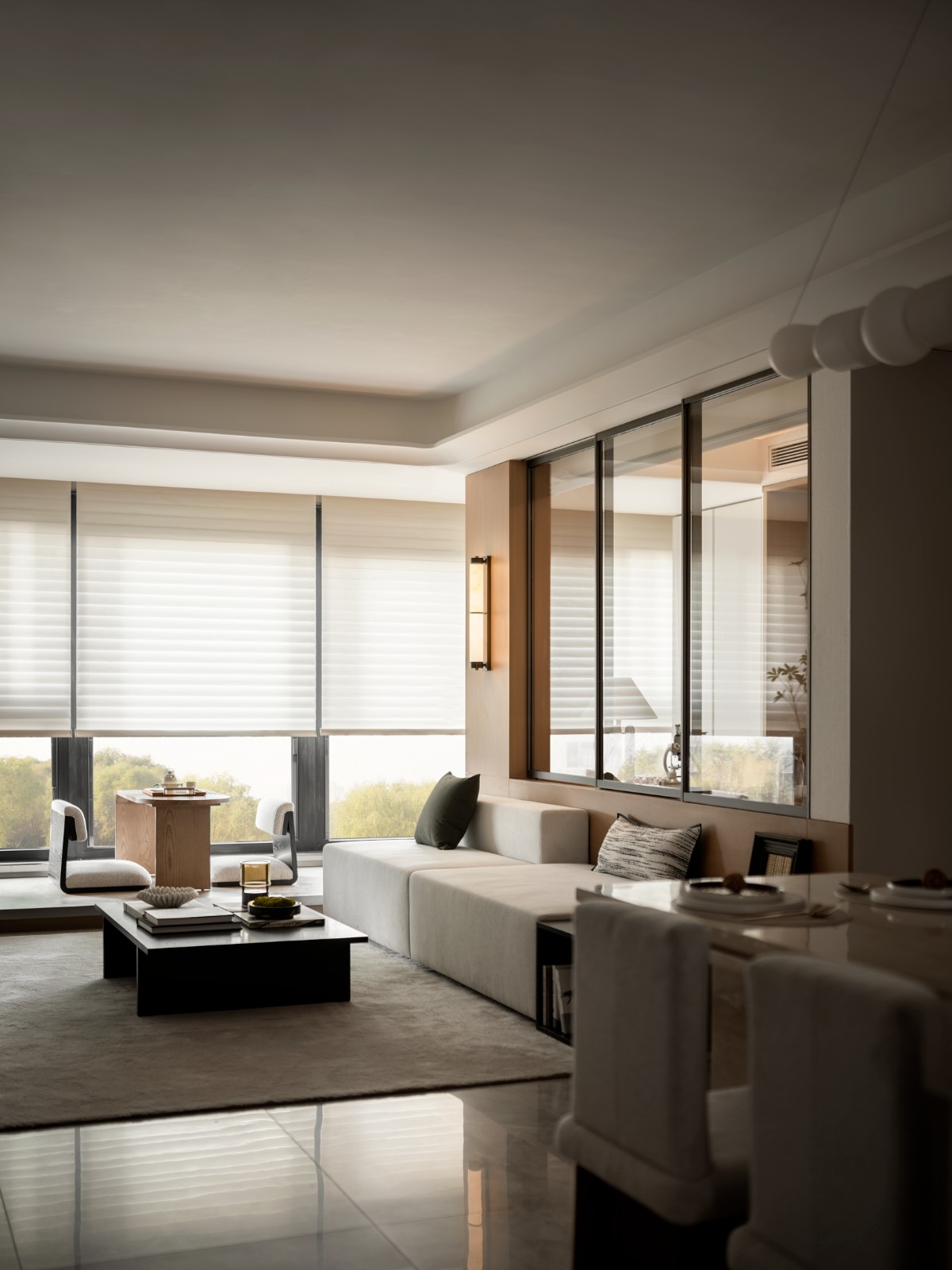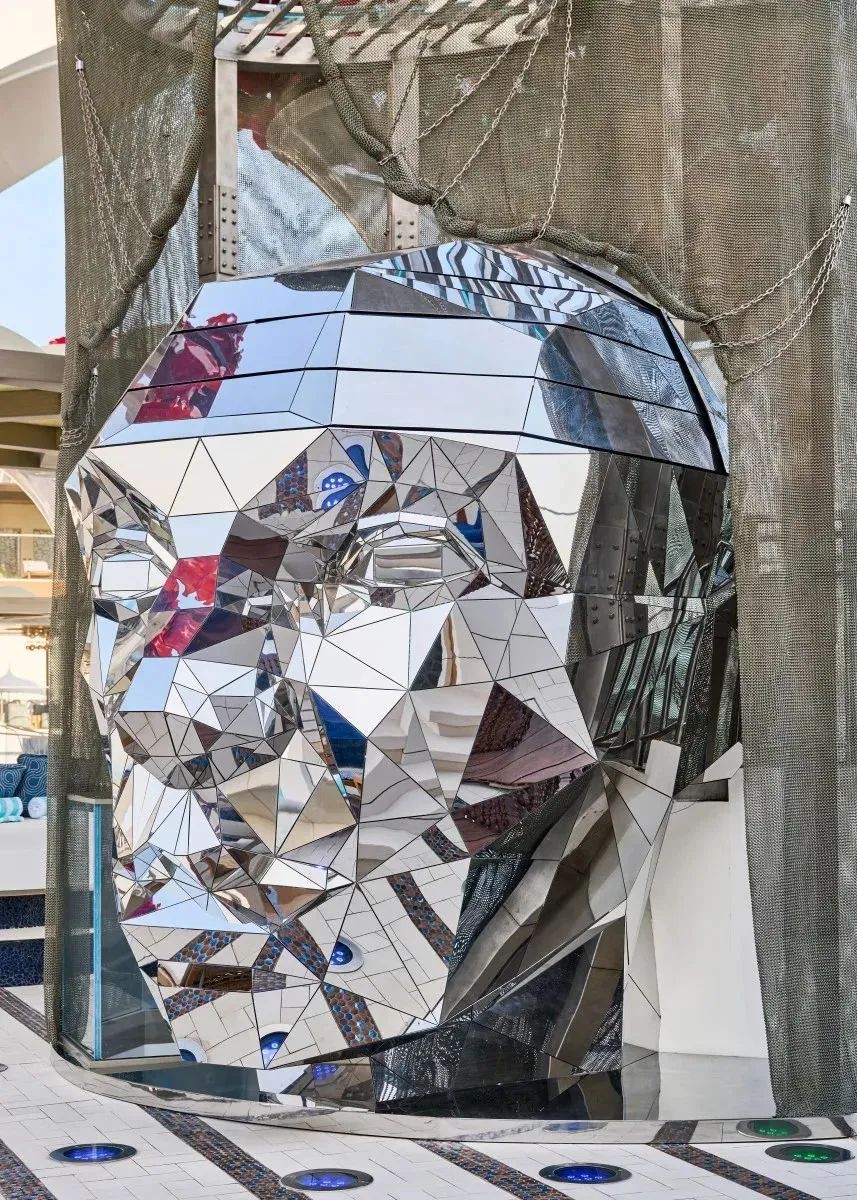Zoersel House Arjaan De Feyter
2019-10-10 16:14
Zoersel House In notion to Bauhaus this steel house was originally designed as a prototype in 1969 that could be erected elsewhere on the still largely empty residential estate. The original plans show a villa with steel skeleton and a half-open ground floor that reminds us of the Villa Savoye, with its central core and industrial materials. The steel skeleton forms a perfect grid of nine squares two storey’s high. The domestic functions were clustered in the nine squares on upper floor, and on the ground floor filled two of them with an entrance hall, a staircase and a storeroom – the rest formed a sort of open carport. This intention of reproduction on a large scale did not come true, however the surrounding landscape, at that time still almost unspoiled, has in the meantime been covered in homes in the ‘fake-farmhouse-style’ and the steel house, built as a Case-Study house, stayed on its own and has been converted and extended unrecognizably. For example; the house gradually filled in the ground floor to gain space, also temporary measures were taken to remedy chronic technical problems. In 2005 interior architect Arjaan De Feyter and his wife bought the house which was in total decay and ready for demolition. They retained the original plan of the first floor, which is where they were to live. They extended the ground floor so as to install a workspace, whose visual impact they mitigated by means of large glass walls with profiles that were barely visible. The house was first stripped down to the steel skeleton and the vaulting. The steel was seriously corroded in many places and had to be restored. The aluminum sandwich panels and the original wooden windows, now double-glazed, were then fitted back into the renovated skeleton. A lot of attention was paid to designing new and better joinery details. The biggest challenge in the renovation was the problem of cold bridges that is characteristic of steel skeletons that are also exposed to the outside. The solution was provided by a quick-drying two-component resin, which was sprayed onto all the beams and pillars in contact with the outside air. This four centimeter coating of resin does not have a spectacular U-value, but it does adhere exceptionally well to steel and is totally damp-proof, so that there is no risk at all of condensation moisture. On the inside of the house, the steel skeleton is now completely enveloped in an amorphous layer of polymer and then encased in painted MDF. The villa now complies with current standards for domestic comfort, while the memory of the original house remains alive. Arjaan De Feyter designed every single interior detail as well.
ZoerselHouse对Baumhaus来说,这个钢屋最初是在1969年被设计为一个原型,在其他地方可以在很大程度上空置的住宅上竖立。最初的计划展示了一个带有钢骨架的别墅和一个半开放的底层地板,它让我们想起了别墅的美味,以及它的核心核心和工业材料。钢骨架形成了9个正方形两层“S”的完美网格。家庭的功能聚集在上层9个广场上,在一楼,有两个房间,有一个入口大厅、一个楼梯和一个储藏室,其余的形成了一个开放的车库。然而,大规模复制的意图并不真实,然而,当时周围的景观,当时仍然几乎没有被破坏,同时在“假农舍式”的住宅中被覆盖,而钢屋作为一个案例研究的房屋,在自己的房子里停留,并已被转换和扩展到不可识别的地步。例如,房屋逐渐填满地面以获得空间,也采取了临时措施来解决长期的技术问题。2005年,内部建筑师ArjaandeFeyter和他的妻子买下了这栋房子,那房子完全腐烂了,准备拆除了。他们保留了一楼的原计划,就是他们要住的地方。他们扩展了底层地板,从而安装了一个工作空间,它的视觉效果通过大的玻璃墙和几乎不可见的轮廓来减轻。房子首先被剥下到钢骨架和拱顶上。钢在许多地方受到严重腐蚀,必须恢复。铝制夹层板和原来的木制窗户,现在是双层玻璃窗,然后再安装在翻新的骨架中。在设计新的和更好的细木工细节方面,花了很多的精力。装修中最大的挑战是冷桥的问题,这是暴露于外部的钢骨架的特征。该溶液由快干双组分树脂提供,该双组分树脂被喷涂到与外界空气接触的所有梁和支柱上。这4厘米的树脂涂层并不具有惊人的U值,但它确实很好地粘附到钢上并且是完全防潮的,因此在所有凝结湿气中都没有风险。在房屋的内部,钢骨架现在被完全包裹在聚合物的非晶层,然后被包裹在涂漆的MDF中。别墅现在COM
采集分享
 举报
举报
别默默的看了,快登录帮我评论一下吧!:)
注册
登录
更多评论
相关文章
-

描边风设计中,最容易犯的8种问题分析
2018年走过了四分之一,LOGO设计趋势也清晰了LOGO设计
-

描边风设计中,最容易犯的8种问题分析
2018年走过了四分之一,LOGO设计趋势也清晰了LOGO设计
-

描边风设计中,最容易犯的8种问题分析
2018年走过了四分之一,LOGO设计趋势也清晰了LOGO设计
















































